We wash the aquarium from green deposits - effective cleaning without problems
In this article, we will present you with effective and simple ways to clean your aquarium from green deposits. Regardless of your experience, you can clean your aquarium easily and hassle-free, creating a healthy and attractive environment for your aquatic life.
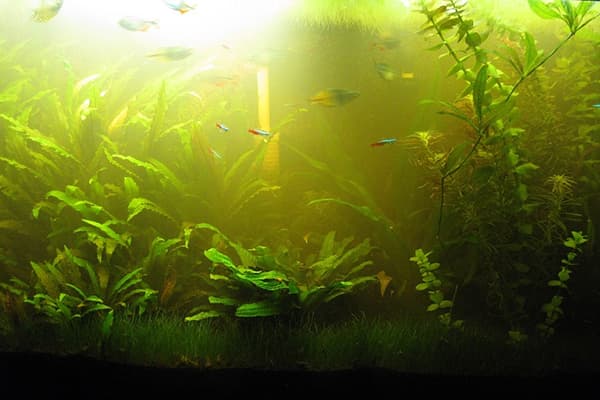
Reasons for the appearance of greenery
Green plaque on the walls causes the development of a number of algae - green euglena, filamentous edogonium and xenococus. These algae envelop not only the walls of the vessel, but also soil stones and decorative elements. The algae development cycle is 3 weeks, during which time all spores settle on the walls of the tank. The green coating begins to lighten, and at this moment it is necessary to get rid of the spores, preventing the start of a new cycle.
The main causes of excessive development of green algae:
- Excessive lighting. The aquarium should not be located directly next to a window under the influence of direct sunlight; artificial lighting must be strictly regulated.
- Insufficient cleaning of glass, soil, plants. Spores lingering in the ground, in scratches on glass, on vegetation, contribute to the further proliferation of algae.
- Incorrect temperature setting.
- Untimely water replacement.
- High concentration of phosphates and nitrates as a result of untimely water replacement. As the liquid evaporates, the amount of salts in it increases; adding water instead of replacing it aggravates the situation.
- Excess food or unsuitable food, uneaten food remains settle to the bottom and begin to rot.
The age of the aquarium must be taken into account. In a new tank, the appearance of algae may be caused by the fact that the nitrogen cycle has not yet been established, or the aquarium plants are not sufficiently rooted. If a green coating appears in an old tank, most likely this is caused by a large amount of organic residues. It is necessary to check whether the filter is clogged. Having determined the causes of the problem, it will be easier for you to choose methods to combat it and remove greens from the aquarium.
Cleaning methods
The green coating on the walls does not directly harm the fish. However, it reduces the amount of nutrients available to plants, leading to further disruption of the biological balance. The amount of oxygen in the water decreases, which negatively affects the fish. If the walls of the tank are covered with a dark green coating, you need to start cleaning. There are several ways to deal with this problem at home.
"Orphans" of the aquarium
Experienced aquarists recommend populating the tank with inhabitants who can independently destroy destructive algae.
Top 7 most effective “cleaners”:
- Many hobbyists breed catfish - pterygoplicht (brocade catfish), ancistrus vulgaris and otocinclus (dwarf catfish). Using their suction cups, they remove algae from the walls of the tank, soil, plant leaves, and can clean decorative elements. The fish are very unpretentious.
- Girinocheylaceae are not capable of removing all types of algae; a large number of individuals are required to maintain cleanliness.
- Viviparous fish such as guppies, mollies, and swordtails are not very effective; a large school will not leave room for other fish species.
- Fish of the order Cyprinidae, as well as lobeo, do not eat algae so readily, and they are aggressive towards other inhabitants.
- Shrimp filter the water, extract uneaten food from it, and remove residues from the surfaces of the walls, soil, and algae. Large specimens do this job better.
- The main advantage of snails is the ability to remove almost all contaminants; the disadvantage is their high fertility.
- Increase the number of fast-growing plants floating in the water column or on its surface. The best option is butterfly, hornwort, and Limnobium shootwort. This will lead to a decrease in light levels, therefore slowing down the development of algae.
Fish, snails and shrimp can cope with cleaning only with the right lighting, temperature, and feeding regime.
Mechanical cleaning of the aquarium
A convenient scraper for cleaning glass from green deposits and a pump for pumping out water can be purchased at a specialized store.
You will also need:
- water container;
- settled water;
- baking soda for cleaning walls;
- sponge.
Main cleaning steps:
- Place the fish in a container with settled water at the same temperature as in the aquarium.
- Clean the glass with a special plastic or wooden scraper; remove hardened dirt with a blade. Try not to damage the surface, because even in the thinnest cracks, remnants of algae can linger, causing a new wave of green growth in the tank.
For cleaning, use special sponges and scrapers that have not previously come into contact with detergents.Even microparticles of chemically active substances are dangerous for the inhabitants of the aquarium.
- Use a pump to pump out the contaminated water.
- Remove equipment parts that are under water, algae and decorative elements. Rinse and, if necessary, pour boiling water over the “non-living” ones.
- Use a siphon pump to remove remaining food and excrement from the bottom. Periodically loosen the gravel and rocks at the bottom. In this way you can thoroughly clean the soil of contaminants.
- Wash the outside walls of the aquarium using special detergents or soda.
- Fill with clean, settled water and leave for several hours for the sand to settle. Heat the water to the temperature at which the fish are currently kept.
- Replace decorative elements, vegetation, and temperature and aeration equipment.
- Replant fish and snails.
If a favorable microclimate has been established in the aquarium, clean the aquarium once a week, replacing approximately a fifth of the water with fresh water. If the walls of the aquarium quickly turn green, cleaning must be done more often, replacing the maximum possible volume of water.
Traditional cleaning methods
It is not advisable to use chemicals to clean the aquarium; first, try using folk remedies:
- Prepare a 10% solution of citric acid, treat the glass, and rinse thoroughly after 15 minutes.
- A 10% solution of ammonia will help remove mucus.
- A 15% solution of acetic acid has high cleaning properties.
Fish and other aquarium inhabitants must be transferred to another container before cleaning.
Chemicals
Specialized stores offer a whole line of products designed to combat unicellular algae. When using them, you must strictly adhere to the instructions, since violation of them can lead to the death of fish, snails, shrimp and aquarium plants.
Soluble tablets are placed on the ground so that they are freely washed with water. During the period of action, the drug gradually releases active substances that prevent the development of algae. After the expiration date, the tablet must be removed from the water. If you strictly follow the instructions, the drug does not harm the inhabitants of the aquarium.
This remedy can be used for prevention by reducing the dosage. Increase aquarium aeration.
Prevention
After cleaning the aquarium from green deposits, follow these steps:
- once a week, replace 15–25% of the liquid with fresh, settled water;
- immediately remove dead plants, preventing them from rotting;
- do not overfeed the fish, all the food poured in should be eaten within 5 minutes;
- stick to the optimal number of fish in the aquarium, taking into account its volume, do not overload it;
- Boil new soil, stones, driftwood and other decorative elements before immersing them in the aquarium;
- Wash purchased plants thoroughly before planting;
- maintain the optimal length of daylight, take into account natural light and backlighting;
- set the biofilter to the highest possible power for your aquarium;
- Protect the aquarium from direct sunlight.
Special tests designed to monitor water parameters are a good way to promptly notice an imbalance in the aquarium and take the necessary measures.Regular weekly cleaning of the aquarium will prevent green deposits from growing to alarming proportions.
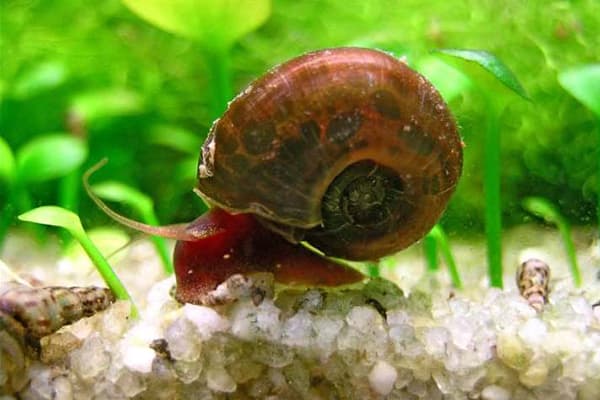
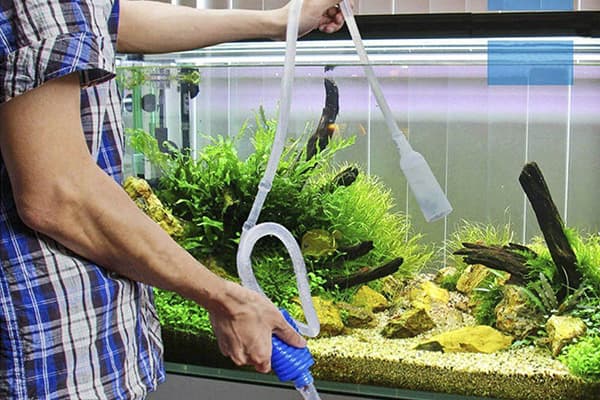
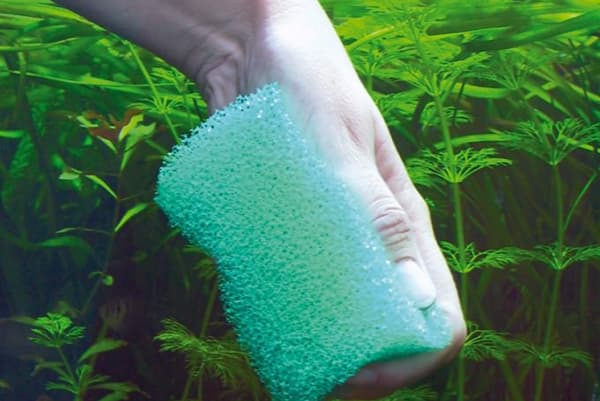
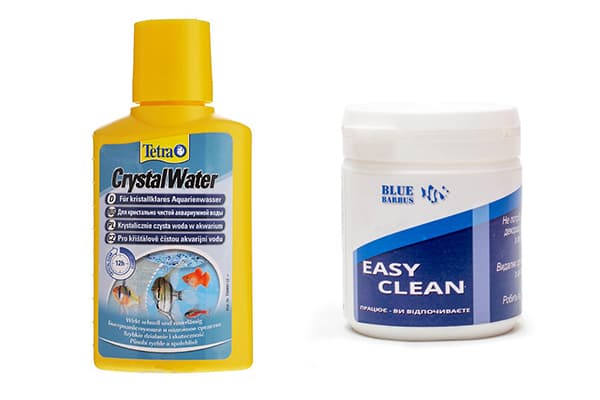
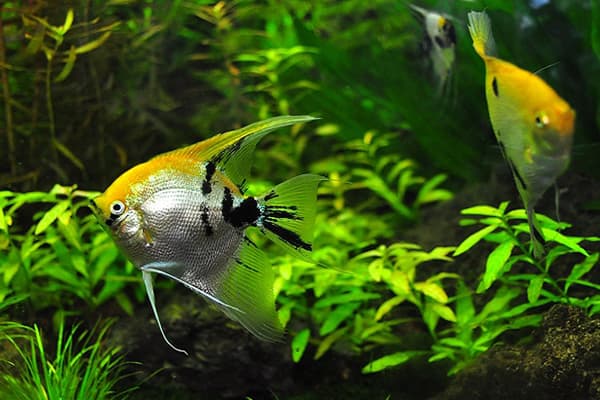
Everything was washed well with citric acid. And no chemistry is needed.